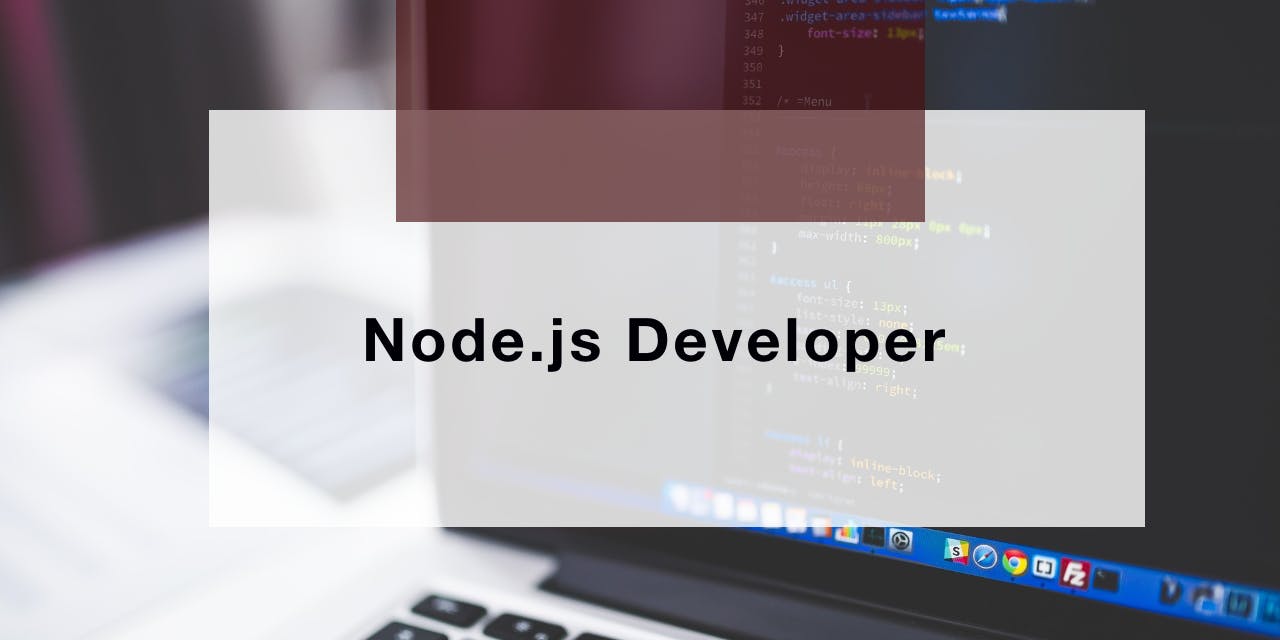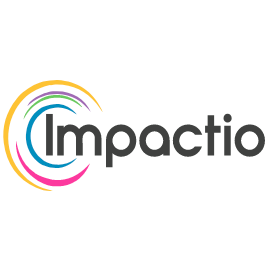What Does a Node.js Developer Do?

Web development can be divided into 2 parts. Front-end and back-end. However, Node.js is not limited to the Front-end or Back-end. It´s a JavaScript runtime environment based on Chrome's V8 JavaScript engine. Also, it can be used to build web applications and software because of its lightweight and scalability. Node.js developers usually work on the server-side development, therefore a Node.js is a back-end developer.
Node.js developers build applications writing in JavaScript or some variants as CoffeeScript or IcedCoffeScript. Developers develop and the majority of the time connect their application to third party services. They also help front-end developers to connect their development with Node.js.
Hiring and Node.js Positions
One good practice at the time of hiring a Node.js developer, is specifying that the role will be a Node.js developer and not a back-end developer as they may not be Node.js developers. It´s recommended for Node.js developers to know front-end development too so that they can help the front-end team better.
This kind of developer manages the data between the server and the users. They are specialists in server-side logic. They also manage and maintain the connection between the server and the database. Node.js aims for high performance.
The code has to be reusable, testable, and efficient at the time of deployment. It is built based on functions that repeat processes and it has to be put in test mode before being executed. Developers are responsible for implementing high performing, secured and data protected applications.
What is Node.js?
Node.js is not a programming language neither a framework, it is defined as a JavaScript Runtime. For this, profound JavaScript knowledge is required. Developers have to be proficient on Node.js frameworks too, as they help speed up the development. Some frameworks are better than others, the most recommended are Express and StrongLoop.
To help on the server-side you can use server-side templating, such as Jade or EJS. Server-side styling helps the front-end team. The use of CSS preprocessors makes the style of the page at the best of its ability both on the front-end and on the back-end. Stylus or Less can be used for this.
Developers have to be experienced in accessibility and security. It´s one of the basic requirements for back-end developers. As the whole infrastructure depends on how safe it is. User authentication and authorization in 3 different steps: systems, servers, and environments. Database schemas and connections have to be done by a regular Node.js developer, so they have to be proficient in database development and set up. MySQL is recommended.
Community and Committee
The project governance of Node.js is very interesting. It follows a consensus at the time of making a decision. Individuals who help the community of the platform and make significant contributions are declared Official Collaborators, giving them access to commit to the project directly. The list of collaborators can be found in the project´s "README.MD" file. There is also an extensive file that serves as a guide for collaborators. It can be found at the "Collaborator-guide.MD" file.
The community counts with a Committee named CommComm. The committee currently works on:
- Community Evangelism
- Education initiatives
- Cultural Direction of Node.js Foundation
- Community Organization Outreach
- Translation and Internalization
- Project Moderation/Mediation
- Public Outreach and Publications
You can be involved with the community in four different ways. You can be a Contributor, a Collaborator, an Observer, or a Member.
- A Contributor is any individual creating or commenting on an issue or pull request.
- A Collaborator is a contributor who has been given write access to the repository
- An Observer is any individual who has requested or been requested to attend a CommComm meeting. It is also the first step to becoming a Member.
- A Member is a collaborator with voting rights who has met the requirements of participation and voted in by the CommComm voting process.
If being closer to the Node.js committee comes to your attention, it is recommended to become an Observer first, so then you can be granted the Member status. To become a member, you have to attend the bi-weekly meetings, file issues and pull requests, and provide useful insights to the platform. The insights can be provided via GitHub as a contributor or Collaborator. Attendance is tracked by community managers, after 3 consecutive months of being an active Observer and Contributor, the CommComm votes to add you as a member. Membership lasts between 6 months up to 12 months before having to be renewed by another round of votes.
In conclusion, Node.js is not a programming language neither a framework. It is a runtime that runs on JavaScript. The developers have to know JS proficiently and have at least a little bit of Front-end development. Node.js is part of the Node.js Foundation and they have a big community and committee. To become a member, you have to first be an Observer, then a Contributor, and then be accepted as an Official Member. It may sound as hard to become a part and selective, but if you are sure you can contribute, don´t ever doubt it.
Related Articles

Web development can be divided into 2 parts. Front-end and back-end. However, Node.js is not limited to the Front-end or Back-end. It´s a JavaScript runtime environment based on Chrome's V8 JavaScript engine. Also, it can be used to build web applications and software because of its lightweight and scalability. Node.js developers usually work on the server-side development, therefore a Node.js is a back-end developer.
Node.js developers build applications writing in JavaScript or some variants as CoffeeScript or IcedCoffeScript. Developers develop and the majority of the time connect their application to third party services. They also help front-end developers to connect their development with Node.js.
Hiring and Node.js Positions
One good practice at the time of hiring a Node.js developer, is specifying that the role will be a Node.js developer and not a back-end developer as they may not be Node.js developers. It´s recommended for Node.js developers to know front-end development too so that they can help the front-end team better.
This kind of developer manages the data between the server and the users. They are specialists in server-side logic. They also manage and maintain the connection between the server and the database. Node.js aims for high performance.
The code has to be reusable, testable, and efficient at the time of deployment. It is built based on functions that repeat processes and it has to be put in test mode before being executed. Developers are responsible for implementing high performing, secured and data protected applications.
What is Node.js?
Node.js is not a programming language neither a framework, it is defined as a JavaScript Runtime. For this, profound JavaScript knowledge is required. Developers have to be proficient on Node.js frameworks too, as they help speed up the development. Some frameworks are better than others, the most recommended are Express and StrongLoop.
To help on the server-side you can use server-side templating, such as Jade or EJS. Server-side styling helps the front-end team. The use of CSS preprocessors makes the style of the page at the best of its ability both on the front-end and on the back-end. Stylus or Less can be used for this.
Developers have to be experienced in accessibility and security. It´s one of the basic requirements for back-end developers. As the whole infrastructure depends on how safe it is. User authentication and authorization in 3 different steps: systems, servers, and environments. Database schemas and connections have to be done by a regular Node.js developer, so they have to be proficient in database development and set up. MySQL is recommended.
Community and Committee
The project governance of Node.js is very interesting. It follows a consensus at the time of making a decision. Individuals who help the community of the platform and make significant contributions are declared Official Collaborators, giving them access to commit to the project directly. The list of collaborators can be found in the project´s "README.MD" file. There is also an extensive file that serves as a guide for collaborators. It can be found at the "Collaborator-guide.MD" file.
The community counts with a Committee named CommComm. The committee currently works on:
- Community Evangelism
- Education initiatives
- Cultural Direction of Node.js Foundation
- Community Organization Outreach
- Translation and Internalization
- Project Moderation/Mediation
- Public Outreach and Publications
You can be involved with the community in four different ways. You can be a Contributor, a Collaborator, an Observer, or a Member.
- A Contributor is any individual creating or commenting on an issue or pull request.
- A Collaborator is a contributor who has been given write access to the repository
- An Observer is any individual who has requested or been requested to attend a CommComm meeting. It is also the first step to becoming a Member.
- A Member is a collaborator with voting rights who has met the requirements of participation and voted in by the CommComm voting process.
If being closer to the Node.js committee comes to your attention, it is recommended to become an Observer first, so then you can be granted the Member status. To become a member, you have to attend the bi-weekly meetings, file issues and pull requests, and provide useful insights to the platform. The insights can be provided via GitHub as a contributor or Collaborator. Attendance is tracked by community managers, after 3 consecutive months of being an active Observer and Contributor, the CommComm votes to add you as a member. Membership lasts between 6 months up to 12 months before having to be renewed by another round of votes.
In conclusion, Node.js is not a programming language neither a framework. It is a runtime that runs on JavaScript. The developers have to know JS proficiently and have at least a little bit of Front-end development. Node.js is part of the Node.js Foundation and they have a big community and committee. To become a member, you have to first be an Observer, then a Contributor, and then be accepted as an Official Member. It may sound as hard to become a part and selective, but if you are sure you can contribute, don´t ever doubt it.
Related Articles
